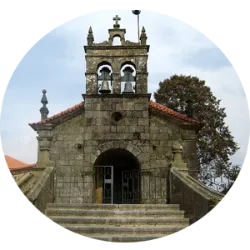Archaeological Discoveries
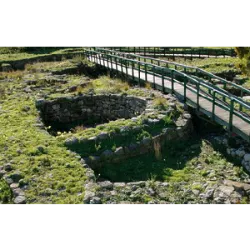
The municipality of Oeiras, known today for its modernity and innovation, preserves fascinating traces of a millennia-old past. Archaeological studies have revealed the presence of prehistoric hill forts, small fortifications that indicate human occupation since ancient times. In addition to these signs, Roman structures such as villas and road remains have been found, attesting to the region's importance during the Roman period.
Rome's influence in Oeiras was not limited to architecture: the agricultural techniques introduced by the colonizers transformed the local landscape, boosting the production of cereals, wine, and olive oil. Roman roads connected Oeiras to Lisbon and other locations, making it strategic for trade and the movement of people.
Experts emphasize that these discoveries help to understand how the region evolved from a rural and fortified territory into an urban and cultural hub over the centuries. Today, Oeiras not only preserves these ancient testimonies but also promotes initiatives to enhance its heritage, allowing residents and visitors to appreciate the historical richness that precedes the modernity that characterizes the municipality.
From the Middle Ages to Modernity

Oeiras, today known for its modernity, has deep roots in the Middle Ages. The town began to take shape during this period, officially recognized as a municipality around the 12th century, establishing itself as an organized community. Its proximity to Lisbon gave it significant strategic importance, serving as a defense point and logistical support for the capital, while also facilitating trade and the movement of people.
The Church played a central role in medieval life. Convents and churches were not only centers of faith but also hubs of education, culture, and social assistance, profoundly influencing local society. Many of these buildings, some still preserved, testify to Oeiras’ religious and social significance during this historical period.
Experts emphasize that understanding the Middle Ages in Oeiras is key to grasping the region’s evolution, from a strategic and religious territory to the urban and innovative hub it is today, reflecting centuries of history that shaped the municipality’s identity.
Test yourself with one of these challenges 👇
Discover some interesting facts about Secrets of Oeiras
Oeiras in the Age of Discoveries
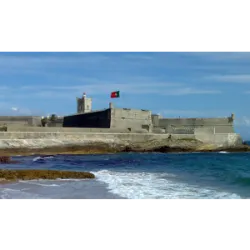
Oeiras, 15th century – During the Age of Discoveries, Oeiras established itself as an important breadbasket for Lisbon and an industrial center, with expanding commercial and manufacturing activities. Documents from 1448 confirm that Oeiras, Aljez, and Barcarena were elevated to the status of reguengo, lands belonging to the Crown, granting privileges to local farmers. During the same period, the first estates emerged, such as Quinta de Paço de Arcos, used by the nobility for hunting and leisure, while the construction of palaces and manor houses multiplied. In the 16th century, the region industrialized: quarries were exploited, and the Lime Kilns were built in Paço de Arcos, while in Barcarena the Black Powder Factory was established for weapons production. The area also strengthened militarily, with fortifications along the coastline, including Forte da Barra and Forte de São Lourenço do Bugio, protecting the entrance to the Tagus River. Between the 16th and 18th centuries, convents and churches, such as the Cartuxa, were built, while agricultural and wine-producing estates supplied the capital. Oeiras thus consolidated itself as a strategic and multifaceted hub, balancing tradition, defense, and economic development.
The Influence of the Marquis of Pombal

In the 17th and 18th centuries, Oeiras emerged as a center of architectural and social transformation. The construction of the Palace of the Marquis of Pombal marked a period of significant influence, reflecting the power and vision of the statesman who led the reconstruction of Lisbon after the devastating 1755 earthquake. The palace became not only a residence but also a symbol of prestige and administrative modernization.
At the same time, the municipality witnessed the development of the Baroque style, evident in churches, palaces, and public buildings. Noble estates flourished, showcasing the wealth and refined taste of the aristocracy, and transforming the local landscape with elaborate gardens, pavilions, and ornamental fountains. These estates also served as social and cultural hubs, establishing Oeiras as a reference point for Lisbon’s elite.
Experts note that the Baroque period in Oeiras reflects the town’s evolution from a strategic settlement to a territory defined by luxury, culture, and architectural innovation. Today, the legacy of these centuries remains visible, highlighting the historical importance of the municipality in shaping the urban and cultural identity of the region.
The Submerged Treasure of Oeiras
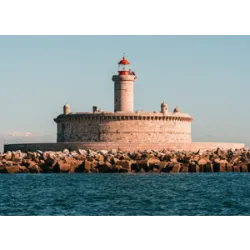
At the mouth of the Tagus River in Oeiras stands one of the lesser-known jewels of Portuguese heritage: the Fort of São Lourenço do Bugio. Built on a small maritime islet, it is unique in the country and dates back to the era of major coastal fortifications, playing a strategic role in defending the Tagus estuary against invasions and pirates. Despite its historical importance, few Oeirenses are aware of its existence, and many pass by the estuary without realizing that centuries of military history lie there. Today, the Bugio remains standing, withstanding the elements and the river’s force, and opens its doors to visitors on organized tours during specific periods of the year. Experts emphasize that discovering and valuing this heritage is crucial to preserving the region’s memory and promoting cultural tourism. For history enthusiasts and the curious, the experience of crossing the Tagus by boat and reaching the fort is unique, offering a close-up view of the engineering and architecture that have endured centuries of turbulent seas. The Bugio thus invites all to rediscover Oeiras’ submerged history and appreciate what often goes unnoticed in everyday urban life.
Black Powder Factory
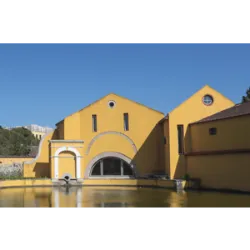
In Barcarena, hidden among streets and estates, stands the historic Black Powder Factory, one of Portugal’s first military industrial complexes. Founded in the 16th century, the factory emerged from the strategic need to produce gunpowder locally, ensuring the country’s military autonomy and avoiding reliance on imports. Over the centuries, the site became a pioneer in developing military technology, with laboratories, workshops, and storage facilities reflecting advanced engineering and safety knowledge for the time. The Black Powder Factory was crucial not only for supplying the armed forces but also for establishing Barcarena as an emerging industrial hub. Despite its historical importance, many residents of Oeiras are unaware of its existence, passing daily by a heritage site that influenced the nation’s political, economic, and military decisions. Today, remnants of the structures can still be seen, reminding visitors that part of Portugal’s technological and strategic history unfolded there. Industrial heritage experts emphasize that preserving and promoting the memory of the Factory is essential to value Barcarena’s historical legacy and its decisive contribution to the country’s security and development.
Green routes reveal millenary history

The Parque dos Poetas in Oeiras is much more than a leisure space: it is a true gateway to local prehistory. Walking along its tree-lined trails and bike paths is pleasant, but few realize that beneath visitors’ feet lie archaeological remains from the Neolithic and Chalcolithic periods. Research indicates that these areas were inhabited by agro-pastoral communities over 4,000 years ago, serving as sites for living, farming, and early funerary rituals. Excavations at key points have uncovered pottery fragments, polished stone tools, and primitive dwelling structures. Archaeology experts warn that many of these traces remain preserved underground, offering a unique opportunity to understand the beginnings of human settlement in Oeiras. The municipality’s green routes, including urban parks and riverside paths, act as corridors linking nature, leisure, and historical memory. For history enthusiasts, strolling through Parque dos Poetas is more than relaxation: it is literally walking where the first inhabitants of Oeiras lived, connecting the present to a distant past in a surprising and fascinating way.
Test yourself with one of these challenges 👇
HOME





